News
On the tenth day of Kofford: 30% off war and peace titles! December 10 2016

War and peace titles are 30% off December 10th. These special prices are only available for one day, so don't wait!
Orders over $50 qualify for free shipping. Also, local Utah customers can opt to pick up their order directly from our office in Sandy (select this option under the shipping menu).
For more information about the Twelve Days of Kofford holiday sales, click here.
 |
War & Peace in Our Time: Mormon Perspectives Retail: $29.95 |
 |
Even unto Bloodshed: An LDS Perspective on War Retail: $29.95 |
 |
The End of the World, Plan B: A Guide for the Future Retail: $13.95 |
 |
Saints of Valor: Mormon Medal of Honor Recipients, Updated 2nd Edition Retail: $31.95 |
On the seventh day of Kofford: 30% off polygamy titles! December 07 2016
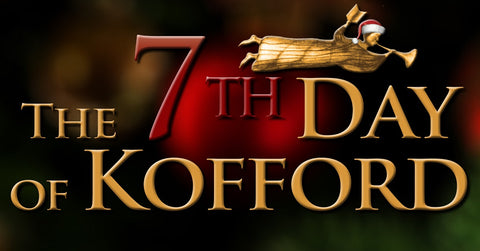
All polygamy titles are 30% off December 7th. These special prices are only available for one day, so don't wait!
Orders over $50 qualify for free shipping. Also, local Utah customers can opt to pick up their order directly from our office in Sandy (select this option under the shipping menu).
For more information about the Twelve Days of Kofford holiday sales, click here.
 |
Joseph Smith's Polygamy, Volume 1: History Now in paperback! Retail: $34.95 |
 |
Joseph Smith's Polygamy, Volume 2: History Now in paperback! Retail: $34.95 |
 |
Joseph Smith's Polygamy, Volume 3: Theology Now in paperback! Retail: $25.95 |
 |
Joseph Smith's Polygamy: Toward a Better Understanding Retail: $19.95 |
 |
Modern Polygamy and Mormon Fundamentalism: The Generations after the Manifesto Retail: $31.95 Best Book Award, John Whitmer Historical Association |
 |
Mormon Polygamous Families: Life in the Principle Retail: $24.95 |
 |
Prisoner for Polygamy: The Memoirs and Letters of Rudger Clawson at the Utah Territorial Penitentiary, 1884–87 Retail: $24.95 |
On the fifth day of Kofford: 30% off Contemporary Studies in Scripture titles! December 05 2016

All Contemporary Studies in Scripture titles are 30% off December 5th. These special prices are only available for one day, so don't wait!
Orders over $50 qualify for free shipping. Also, local Utah customers can opt to pick up their order directly from our office in Sandy (select this option under the shipping menu).
For more information about the Twelve Days of Kofford holiday sales, click here.
 |
Authoring the Old Testament, Volume 1: Geneses—Deuteronomy Retail: $26.95 |
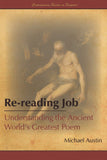 |
Re-reading Job: Understanding the World's Greatest Poem Retail: $20.95 |
 |
Search, Ponder, and Pray: A Guide to the Gospels Retail: $27.95 |
 |
Beholding the Tree of Life: A Rabbinic Approach to the Book of Mormon Retail: $21.95 |
 |
The Vision of All: Twenty-five Lectures on Isaiah in Nephi's Record Retail: $25.95 |
On the fourth day of Kofford: 30% off Blake Ostler titles! December 04 2016

All Blake Ostler titles are 30% off on December 4th. These special prices are only available for one day, so don't wait!
Orders over $50 qualify for free shipping. Also, local Utah customers can opt to pick up their order directly from our office in Sandy (select this option under the shipping menu).
For more information about the Twelve Days of Kofford holiday sales, click here.
 |
Exploring Mormon Thought, Volume 1: The Attributes of God Retail: $29.95 |
 |
Exploring Mormon Thought, Volume 2: The Problems of Theism and the Love of God Retail: $34.95 |
 |
Exploring Mormon Thought, Volume 3: Of God and Gods Retail: $34.95 |
 |
Fire on the Horizon: A Meditation on the Endowment and Love of Atonement Retail: $17.95 |
On the second day of Kofford: 30% off Adam Miller titles! December 02 2016

Adam Miller's Essays in Mormon Theology titles will be 30% off on December 2nd. These special prices are only available for one day, so don't wait!
To get the 30% discount, simply enter the code MILLERCHRISTMAS (all caps) in the discount code box at check-out.
Orders over $50 qualify for free shipping. Also, local Utah customers can opt to pick up their order directly from our office in Sandy (select this option under the shipping menu).
For more information about the Twelve Days of Kofford holiday sales, click here.
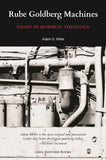 |
Rube Goldberg Machines: Essays in Mormon Theology Retail: $18.95 |
 |
Future Mormon: Essays in Mormon Theology Retail: $18.95 |
Twelve Days of Kofford Christmas Sale 2016 November 30 2016
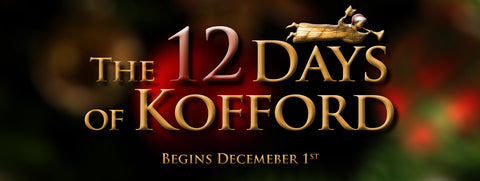
MERRY CHRISTMAS FROM GREG KOFFORD BOOKS
Greg Kofford Books is pleased to announce our annual holiday sale on select popular titles beginning December 1st – December 12th.
Here's how it works: at the stroke of midnight each day, a new blog post will go live on our website listing that day's special offerings along with a discount code that you can enter at check-out to get the holiday price. It's that simple. We will also be posting the daily offering and discount code on our Facebook page at 7am.
*Orders over $50 qualify for free shipping (continental U.S. customers only). Local Utah customers can stop by our office in Sandy to pick up their orders as well. Holiday inventory on some titles may be limited, so be sure to take advantage of the daily sale early.*
To help you plan in advance, here are our scheduled sales:
Day 1 — Brant Gardner titles
 |
Second Witness: Analytical & Contextual Commentary on the Book of Mormon series
|
 |
The Gift and Power: Translating the Book of Mormon |
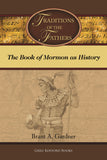 |
Traditions of the Fathers: The Book of Mormon as History Best Religious Non-fiction Award, Association for Mormon Letters |
Day 2 — Adam Miller titles (essays in Mormon theology)
 |
Rube Goldberg Machines: Essays in Mormon Theology Retail $18.95 |
 |
Future Mormon: Essays in Mormon Theology Retail: $18.95 |
Day 3 — Personal Essays
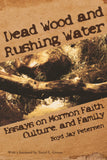 |
Dead Wood and Rushing Water: Essays on Mormon Faith, Culture, and Family Retail: $22.95 |
 |
Mr. Mustard Plaster and Other Mormon Essays by Mary Lithgoe Bradford Retail: $20.95 Sale price: $14.67 |
 |
Writing Ourselves: Essays on Creativity, Craft, and Mormonism Retail: $18.95 |
Day 4 — Blake T. Ostler titles
 |
Exploring Mormon Thought series by Blake T. Ostler 30% off each title |
 |
Fire on the Horizon: A Meditation on the Endowment and Love of Atonement Retail: $17.95 |
Day 5 — Contemporary Studies in Scripture
 |
Authoring the Old Testament: Genesis — Deuteronomy Retail: $26.95 |
 |
Re-reading Job: Understanding the Ancient World's Greatest Poem Retail: $20.95 |
 |
Search, Ponder, and Pray: A Guide to the Gospels Retail: $27.95 |
 |
Beholding the Tree of Life: A Rabbinic Approach to the Book of Mormon Retail: $21.95 |
 |
The Vision of All: Twenty-five Lectures on Isaiah in Nephi's Record Retail: $25.95 |
Day 6 — International Mormonism
 |
The Trek East: Mormonism Meets Japan, 1901–1968 Retail: $39.95 |
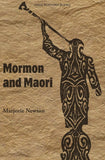 |
Mormon and Maori Retail: $24.95 Best International Book Award, Mormon History Association |
 |
Tiki and Temple: The Mormon Mission in New Zealand, 1854–1958 Retail: $29.95 Best International Book Award, Mormon History Association |
 |
For the Cause of Righteousness: A Global History of Blacks and Mormonism, 1830–2013 Retail: $32.95 Best Book Award, Mormon History Association |
 |
The History of the Mormons in Argentina Retail: $24.95 |
 |
From Above and Below: The Mormon Embrace of Revolution, 1840 – 1940 Retail: $34.95 Best International Book Award, Mormon History Association |
Day 7 — Polygamy titles
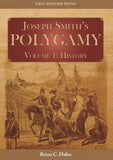 |
Joseph Smith's Polygamy: History and Theology Now in paperback! 30% off each title |
 |
Joseph Smith's Polygamy: Toward a Better Understanding Retail: $19.95 |
 |
Modern Polygamy and Mormon Fundamentalism: The Generations after the Manifesto Retail: $31.95 Best Book Award, John Whitmer Historical Association |
 |
Mormon Polygamous Families: Life in the Principle Retail: $24.95 |
 |
Prisoner for Polygamy: The Memoirs and Letters of Rudger Clawson at the Utah Territorial Penitentiary, 1884–87 Retail: $29.95 |
Day 8 — Contemporary Issues
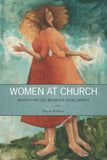 |
Women at Church: Magnifying LDS Women's Local Impact Retail: $21.95 |
 |
Common Ground—Different Opinions: Latter-day Saints and Contemporary Issues Retail: $31.95 |
 |
The Liberal Soul: Applying the Gospel of Jesus Christ in Politics Retail: $22.95 |
 |
Voices for Equality: Ordain Women and Resurgent Mormon Feminism Retail: $32.95 |
Day 9 — Biography
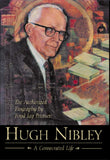 |
Hugh Nibley: A Consecrated Life Retail: $32.95 Best Biography Award, Mormon History Association |
 |
“Swell Suffering”: A Biography of Maurine Whipple Retail: $31.95 Best Biography Award, Mormon History Association |
 |
William B. Smith: In the Shadow of a Prophet Retail: $39.95 Best Biography Award, John Whitmer Historical Association |
 |
The Man Behind the Discourse: A Biography of King Follett Retail: $29.95 |
Day 10 — War and Peace
 |
War & Peace in Our Time: Mormon Perspectives Retail: $29.95 |
 |
Even unto Bloodshed: An LDS Perspective on War Retail: $29.95 |
 |
The End of the World, Plan B: A Guide for the Future Retail: $13.95 |
 |
Saints of Valor: Mormon Medal of Honor Recipients, Updated 2nd Edition Retail: $31.95 |
Day 11 — Mormon Image in Literature
 |
The Mormoness; Or, The Trials Of Mary Maverick: A Narrative Of Real Events Retail: $12.95 |
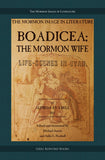 |
Boadicea; the Mormon Wife: Life Scenes in Utah Retail: $15.95 |
Day 12 — Ebook Flash Sale — $1.99 for select titles
To be announced. Stay tuned!
Q&A with Julie M. Smith for As Iron Sharpens Iron July 26 2016

Pre-order Your Copy Today
Q: Give us a little background into how this project started.
A: I read a review copy of Matthew Richard Schlimm's This Strange and Sacred Scripture: Wrestling with the Old Testament and Its Oddities. Its aim is to help the modern reader figure out what to do when a work they regard as sacred seems to promote genocide, slavery, etc. There is a brief section in the book—just a page or two—where he presents a fictitious dialogue between Ruth and Ezra. Ezra is the one who commands the Israelites to divorce their foreign wives. Ruth, of course, is a foreign wife. Now, in real life, they never had this conversation—they didn't even live at the same time. But Schlimm has created this conversation that shows them exploring their positions on what we would call interfaith marriage. It is civil, but neither concedes. They explore their disagreement. This dialogue stuck in my mind. A few weeks later, I was still thinking about it. I wished that I could read an entire book of dialogues like that. And since I know some pretty clever people, I decided to ask them to write a book like that for me.
Q: Why is it important for readers of scriptures to understand that there are various, sometimes even contesting, views within the scriptures?
A: Usually, one of two things happens: we either don't read closely enough to notice that there are differences, or, as soon as we notice the differences, we work as hard and as quickly as we can to come up with some theory that makes the difference disappear. But what if the contesting views are supposed to be there? What if they are a feature and not a bug? This book is an exercise in exploring those differences. If they are there, they are a feature of the scriptures, and we might just be able to learn something from them.
Q: Why did you choose to portray these different views within scriptures as fictionalized dialogues among scriptural figures? Does this approach tie into a more anciently-practiced approach to scriptural hermeneutics?
A: In some ways it is similar to the Jewish practice of midrash because it is creative and because it goes beyond the text itself. But whereas midrash often tries to fill “gaps” or solve problems, it was important to me that we specifically not do that, but rather try to stay true to the text itself. As far as using fictionalized dialogues, it seemed to be a reader-friendly manner of presenting the diverging opinions. It also models civil dialogue—something I think this current moment is lacking and might benefit from seeing modeled.
Q: What are some of the larger themes within scripture that are particularly relevant to a modern audience?
A: Can I say “all of them”? I'm not sure there is much that they wrestled with that we don't, at least in some iteration. For example, my dialogue concerns Mark and Luke discussing (or, as Ben Peters described it, “mansplaining”) women's proper roles. Luke's viewpoint is that we honor women by honoring what women have traditionally done; Mark's is that we honor women by removing restrictions from their behavior. But is Mark's view requiring women to act like men in order to be worthy of honor? Is Luke's view too limiting of what women can do? It's 2,000 years later and we are still having precisely the same conversation about women's roles. This is true for all of the dialogues.
Q: Can you provide an example or two of topics that casual readers may assume unity among Biblical writers that, upon closer scrutiny, may actually show tension?
A: Nicholas Frederick has a great piece contrasting the different views about the nature and divinity of Jesus within the New Testament. Heather Hardy's piece highlighting the different ways that Joseph (in the Old Testament) and Nephi think about rivalry and reconciliation with their siblings is just fantastic. Ronan James Head writes about contrasting views of Satan.
Q: How does understanding the different views and ideas presented in scripture help us to have a deeper, more rewarding experience in reading them?
A:Well, I find the places of tension to be the most productive locations for really pondering because they raise such important questions about how to resolve those tensions. I'm a big proponent of the idea that when you are pondering and wrestling, you are creating space for the Spirit to speak as you let the questions tumble around.
Pre-order your copy today.
Q&A with Adam S. Miller, author of Future Mormon: Essays in Mormon Theology April 15 2016
Pre-order your copy today.
It is difficult to be contemporary. Historians can avoid the trouble of being contemporary by writing about history and the history of ideas. But as a philosopher and theologian, I think the other tack is more appropriate. Rather than taking shelter in the past, my work takes shelter in the future. It takes future Mormons as it audience. I can't claim any kind of authority in the present, but my hope is that my work might be useful down the road for my grandchildren and great grandchildren. No one, right now, is asking me to write anything or think harder about anything. That's understandable. But maybe I can still be useful and leave something behind that could be helpful in the future.
Q: How does this new volume differ from Rube Goldberg Machines?Future Mormon is, I think, a stronger collection of essays. They are more tightly integrated around a handful of key themes and, while they frequently remain academic in spirit, they are, in general, less playful or poetic and more straightforward than some of the material in Rube Goldberg Machines.
Q: In the introduction you describe your book as a “future-tense apologetics.” In what ways is your book apologetic, and how does it differ from how apologetics is traditionally understood?
The book is apologetic in that it offers a defense of Mormonism. But it is different from conventional forms of apologetics because it doesn't attempt to defend Mormonism against the specifics of any past or present criticisms. Rather than supplying specific answers to specific questions, I think these essays, instead, try to gather potential tools and resources that future Mormons may need to tackle problems that, for us, may be only barely perceptible at present.
Q: When you look at the generations coming up, what do you suspect will be the most pressing issues for them as they navigate their relationship with Mormonism? And how does Future Mormon address those issues?
The most pressing issue will be Christ. Future generations will have to—just as we must—figure out how to not just talk about Christ but live life in Christ. Life in Christ is the perpetual challenge. They, however, will also have to figure out what such a life looks like in a world that, increasingly, takes sexual, racial, and economic equality seriously, all while dealing with profound and planet-wide ecological changes.
Q: As does much of your work, this book focuses a good deal on grace. This is a topic that has received much more traction in Mormonism today than it did in the past. Why do you think this is the case, and how does your understanding of grace differ from how Mormons generally view it?
Grace is just one way of talking about what life in Christ looks like. But it is a good way. It is language native to Christianity's earliest and most influential expression. For my part, I think that Mormons generally use the word in a way that is still too narrow, still too secondary. We need something like a general theory of grace. In this book, I try to open up some accessible lines that could help us think about what a general theory of grace would involve.
Q: In one of your essays, you say that Mormons need to learn to be more Pauline. In the last several decades there has been a growing interest in Paul by philosophers--and even atheist philosophers. What has drawn their interest, and what is it about Paul that Mormons have generally failed to learn from?
Paul's message, as an apostle of Christ, has perennial traction, with Christians and non-Christians alike. In his letters Paul is trying to describe what a certain kind of life, an awakened and liberated life, looks like. This kind of life—whether someone comes to it by way of the Christian tradition or more directly by way of life itself—has a kind of universal appeal. If atheists aren't interested in the theological work that we're doing, then we're probably doing it wrong. Paul, though, is a good example of doing it right.
Year in Review and the Year Ahead December 29 2015
2015 was another amazing year for Greg Kofford Books! Here is a recap of the year and a look ahead to what is coming in 2016 and beyond.
Award-winning Publications
Several Kofford titles won awards from the Mormon History Association and the Association for Mormon Letters in 2015:
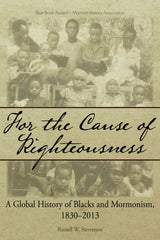 |
MHA Best Book Award For the Cause of Righteousness: A Global History of Blacks and Mormonism, 1830-2013 “Invaluable as a historical resource.” — Terryl L. Givens, author of Parley P. |
 |
MHA Best International Book Award Mormon and Maori “Unflinchingly honest yet unfailingly compassionate.” — Grant Underwood, |
 |
AML Religious Non-Fiction Award Re-reading Job: Understanding the Ancient World's Greatest Poem “A new gold standard for Mormon writings.” — Julie M. Smith, author, Search, |
All 2015 Titles
Here are all of the great titles that Greg Kofford Books published this past year:
 |
Mr. Mustard Plaster and Other Mormon Essays “Vibrant portraits of a kind and loving soul.” — Boyd J. Peterson, author of |
 |
Perspectives on Mormon Theology: Scriptural Theology Each essay takes up the relatively un-self-conscious work of reading a |
 |
Joseph Smith's Polygamy: Toward a Better Understanding “It is a book that will be read and discussed for years to come.” — Robert L. |
 |
Even Unto Bloodshed: An LDS Perspective on War “Indispensable for all future Mormon discussions of the subject.” — Daniel C. |
 |
William B. Smith: In the Shadow of a Prophet “Walker’s biography will become essential reading.” — Mark Staker, author of |
 |
Voices for Equality: Ordain Women and Resurgent Mormon Feminism “Timely, incisive, important.” — Joanna Brooks, co-editor of Mormon |
 |
Traditions of the Fathers: The Book of Mormon as History “Illuminating, prismatic views of the Book of Mormon.” — Mark Alan Wright, |
Looking Ahead at 2016 and Beyond
Here are a few eagerly-anticipated titles currently scheduled for the first part of 2016 and a look at what is in the works for the future:
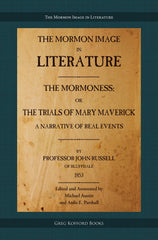 |
The Mormon Image in Literature Series The Mormoness; Or, The Trials Of Mary Maverick: A Narrative Of Real Events Published in 1853, the first American novel about the Mormons is also one of |
 |
The End of the World, Plan B: A Guide for the Future Environmental decline, political gridlock, war and rumors of war, decadence, |
Also forthcoming...
More volumes are in the works for our The Mormon Image in Literature, Contemporary Studies in Scripture, and Perspectives on Mormon Theology series.
Saints, Slaves, and Blacks by Newell G. Bringhurst, revised and updated
Lot Smith: Utah Hero, Arizona Colonizer by Carmen Smith and Talana Hooper
The Trek East: Mormonism Meets Japan, 1901-1968 by Shinji Takagi
Science the Key to Theology by Steven L. Peck
And much, much more...
Thank you for making 2015 exceptional and we are excited about 2016!
LDS Theory of War in 3-Part Series October 08 2015

Kofford Books author Duane Boyce recently discussed the Mormon theology of war and violence in a three-part series at Meridian Magazine.
Boyce is the author of the Even unto Bloodshed: An LDS Perspective on War (2015), which has garnered the following praises:
“A careful and detailed argument against pacifism has long been needed, and it is hard to imagine someone doing a better job of it. The scholarship in this volume is impressive, and it is likely to be the definitive work on the subject for years to come. Truly a major accomplishment.” — K. Codell Carter, Professor of Philosophy, Brigham Young University
“Finally, we have a comprehensive and thorough discussion of war from an LDS perspective." — Royal Skousen, Professor of Linguistics, Brigham Young University, Editor, Book of Mormon Critical Text Project
In the first part of his series, Boyce discusses the question of pacifism vs. non-pacifism in LDS theology. He states:
"There are two fundamental views of war: pacifism, which argues that war cannot be justified and instead must be rejected as a matter of principle, and non-pacifism (of which just-war theory is an example), which argues that war is justified in certain circumstances.
It is easy to understand the appeal of both points of view. On one hand, all disciples of Christ detest violence; it is in the DNA of Christian embrace. And that gives pacifism a natural gravitational force: its appeal is both intrinsic and compelling. But an equally intrinsic and compelling influence in Christian DNA is the love of our families and of our brothers and sisters in general, and the obligation we feel to protect them from being brutalized and murdered.
The pull of these two moral forces creates a natural tension. The love of peace and the love of our brothers and sisters are both genuine, and both exert a natural influence on disciples of Christ. People end up leaning one way or the other, but it seems that everyone actually feels the pull of both.
The same tension seems to appear in the scriptures themselves."
Read part one: "Pacifism or Non-Pacifism? The First Great Question in Developing an LDS Theory of War."
In the second part of his series, Boyce examines the scriptural context of war:
"[One] view thought to support non-violence is the assertion that Book of Mormon wars occurred only because the Nephites were unrighteous. Every war they fought was completely unnecessary because the Lord promised Nephi that the Lamanites would never bother the Nephites if only the Nephites remained righteous (1 Nephi 2:23). We cannot, therefore, draw support for righteous conflict from the Nephites, since it turns out that the Nephites were always unrighteous when involved in conflict.
This claim, however—like the others—also appears to suffer when we examine the text more closely. It turns out that the Book of Mormon actually reports multiple occasions on which the Nephites suffered attack even though they were righteous—a feature of the record that straightforwardly disproves this categorical claim about them."
Read part two: "Do the Scriptures give us a Theory of War?"
In the third part of his series, Boyce discusses a theory of "just war" from an LDS perspective:
"Granted that the Lord abhors violence, what reason is there to think that he abhors all violence for the same reasons? Are all forms of violence the same? Do they all have the same moral character? Are the violence of a rapist and the violence of his victim the same? Do their violent acts have the same moral status? And are all forms of abhorrence-of-violence, then, the same?
And try this question. Why does scripture seem to countenance violence in some teachings/episodes and condemn it in others? Is there any reason to think the different cases and contexts are equivalent? Isn’t it more natural to wonder if there are differences between them and that that’s why they seem to teach different attitudes toward violence?"
Read part three: "Just War Theory and Key Gospel Texts"
Q&A with Voices for Equality Editors June 23 2015
Voices For Equality: Ordain Women and Resurgent Mormon Feminism
Edited by Gordon Shepherd, Lavina Fielding Anderson, and Gary Shepherd
Approx. 425 pages
Paperback $32.95 (ISBN 978-1-58958-758-8)
Pre-order your copy here.
Q: What led the three of you to this project? How did it come together with so many authors?
Gary Shepherd: Lavina, of course, is a long-time Mormon feminist who has been at the forefront in challenging the LDS Church to re-examine traditional assumptions about a variety of issues and to become a more open, flexible, and tolerant organization. Gordon and Gary have written about processes of change in Mormonism and the LDS Church for over 30 years, and specifically predicted in their first co-authored book, A Kingdom Transformed (University of Utah Press, 1984), that women’s status would become a major issue in the church in the decades to come. When OW first began to stir publicity for its cause in March of 2013, Gordon and Gary saw an opportunity for first hand sociological observation of what promised to be a potent new expression of LDS women’s movement towards status equality with men. The three of us were well- acquainted from many years of overlapping scholarly involvements and agreed that a book that drew from a wide spectrum of Mormon scholars and activists on this subject could be an important stimulus for a larger, constructive discussion within LDS circles on the prospects for change. Lavina was especially well-connected with key people involved in both OW and Mormon feminism generally, and we were able to successfully tap into her network for authors who could address the various issues we thought were important.
Q: Who are the intended audiences for this book? What do you hope each get out of it?
Gary Shepherd: We hope the book will particularly have wide enough appeal to attract a general, lay LDS readership. Many LDS members know only what they read and see in media sources about Mormon feminist goals and their rationale, or what they hear in church from both leaders and ordinary gossip. At the same time, Mormon women tend to be uncommonly well-educated, especially younger generations, and their personal experience in contemporary secular society—in school, careers, organizations, and every other arena of social life—fosters increasingly taken-for-granted assumptions about their equality with men. When these assumptions are not institutionally applied within the LDS religious realm, it must cause some degree of dissonance and at least private musing about the causes, consequences, and possible resolutions of this significant discrepancy. So this is the first audience we hope will be reached, at least enough to provide an impetus for further personal reflection and conversation with family, friends, and colleagues.
Otherwise, there is enough of a scholarly approach taken in many chapters of the book to certainly appeal to Mormon intellectuals, academics, and scholars. For those among these categories who are themselves committed in various ways to advance gender equality in the Church, we think this book will help crystallize views and perhaps serve as a catalyst for more effective efforts to bring about change through writing, speaking, discussion, and assignment of the book as a text in Mormon studies courses.
Q: This book appears at a time when social media and podcasting have soared in popularity as perhaps the primary ways, especially among young people, to communicate about people, events, and ideas. How does an academic book like this fit into that crowd? Can it say and do things that these other forms of communication cannot?
Gary Shepherd: Yes, certainly. As you note, we have brought together a relative large and diverse set of authors—some activists, some scholars—in one place—this book—and have solicited and organized their diverse, expert, well-reviewed, written contributions around a set of pre-planned, coherent topical subjects. We don’t think you can easily get this kind of all-in-one-place coherent, quality education from popular social media sources.
Q: The title of your book, Voices for Equality: Ordain Women and Resurgent Mormon Feminism implies that in Ordain Women there is both an intimate connection but also possibly a significant divergence from prior iterations of Mormon feminism. Is this the case? And if so, how?
Gary Shepherd: Ordain Women is not exclusively a younger generation movement, but certainly many of the leaders are of a younger generation (e.g, 20-40 or so years of age), and many of the women (and men) who have posted OW Profiles on-line are also younger. These are the generations mentioned above who take-for-granted gender equality in a modern, secular world and yet experience its absence in the realm— religious and spiritual—that for many is most important to them. They are action oriented, more prone to speak directly to power, and are genuinely committed to bringing about the gender equality they see lacking in their church within their own lifetime. At the same time, OW would not even exist without the conceptual framework and organizational foundations established by second wave Mormon feminists in the 1970s, 80s, and 90s and the steps they took to challenge established patriarchal traditions through their persistent and persuasive writings and personal witness. And, in fact, several of the founding and continuing leaders of OW are older Mormon feminists who have never stopped working for change and are grateful to see that their earlier contributions are now being incorporated into this new, energetic, and concrete activist expression of hope for reform. This intimate connection you speak of between prior expressions of Mormon feminism and current OW activists is, in fact, one of the points strongly made in several chapters of Voices.
Q: In the preface to the book, Lavina writes that she considers this volume to be the third literary voice in an intensifying conversation about women in the LDS church, along with Sheri Dew's Women and Priesthood, and Neylan McBaine's Women at Church: Magnifying LDS Women's Local Impact. Tell us more about this dynamic and how Voices for Equality makes its contribution.
Gary Shepherd: Simply that Dew’s position—although perhaps had it been given voice several decades ago would likely have been perceived as quite liberal for simply discussing issues of equality—currently occupies the most conservative end of the contemporary continuum. McBaine’s book occupies middle ground, advocating changes that give women more recognition and participation opportunities in worship and ecclesiastical affairs but not fundamentally moving LDS women into the same sphere of equality within the Church that they claim as their intrinsic right in the larger world. It is movement into this ultimate sphere that of course OW advocates. Our book, represented by a diverse set of authors, is not unanimous in its endorsement of OW strategies and goals or single-minded in its preoccupation with OW per se. But anyone who reads our book in its entirety with an open mind should at least be forced to re-examine prior assumptions and begin thinking more clearly and systematically about the values and changes that Mormon feminists are so earnestly and persuasively advocating.
Q: There are a variety of methodological approaches you and the various authors have taken in documenting and narrating the phenomenon that has been Ordain Women within the wider context of Mormon feminism. Tell us a little about these various approaches and how they contribute to our understanding of these events, people, and ideas.
Gary Shepherd: No issue of broad social scope can adequately be comprehended by a single method or point of view. There is always a historical, social, and cultural context within which every current concern is embedded. So we have solicited historians to identify and narrate the complex of interrelated events that generated both original Mormon feminism and subsequently OW. We have solicited sociologists, psychologists, and anthropologists to explore both past and present patterns of social interaction and cultural meaning that give shape and substance to Mormon feminism and OW and reveal the nature of conflict between these movements and the established institutional authority and traditions of the LDS church. Theologians have helped us to understand the rationale behind authoritative proclamations of belief, doctrine, and religious practice and how, within these proclamations, there is ground for change and reinterpretation. And, importantly, individuals who have made history by engaging with others in thought, hopeful prayer, organizational participation, and direct action are drawn upon to provide accounts of their own lived experience.
Q: How do you see Voices for Equality positioned within the wider universe of Mormon feminism and questions revolving around Mormon women? What might you hope to see in the future as far as scholarship on these subjects is concerned?
Pre-order your copy now.
- Previous
- Page 2 of 2


